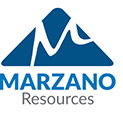An associate from Marzano Resources conducted a professional development workshop in 2015 with the superintendent of McKinney ISD, one of the fastest-growing districts in Texas. They reinforced the need to look at student achievement initiatives to determine what was working and what needed improvement.
“We needed to be able to capture evidence about our current initiatives, highlight areas of need, and be able to make corrections, rather than add another program or initiative,” says Melanie Magee, senior director of curriculum and instruction in the Student Support department at McKinney, which has more than 24,500 students in 20 elementary schools, five middle schools, three high schools, two alternative campuses and one early childhood education center.
“The bottom line is student achievement,” Magee says.
Impact on student achievement
McKinney leaders decided to use the Marzano High Reliability Schools™ (HRS) framework, which shows how best practices work together without adding new initiatives. The framework also provides indicators to empower districts and schools to measure their progress on attaining five progressive levels of reliability:
- Level 1: Safe, Supportive and Collaborative Culture
- Level 2: Effective Teaching in Every Classroom
- Level 3: Guaranteed and Viable Curriculum
- Level 4: Standards-Referenced Reporting
- Level 5: Competency-Based Education
Using the framework and indicators, district and school leaders can significantly impact student achievement by synthesizing multiple complex initiatives so students can learn the content and skills necessary for success in college, careers and beyond.
Certifications lead to net gains
For three years, Marzano Resources provided PD services for McKinney’s certification in the first two levels. In 2018-19, Reuben Johnson Elementary School experienced a net gain of 35% on state standardized math, reading and writing scores, which Magee attributes to the HRS framework.
“We had a laser focus on effective classroom instruction, and tailored the framework to specific points of need, which contributed to our level of success,” Magee says.
“We had a laser focus on effective classroom instruction, and tailored the framework to specific points of need, which contributed to our level of success.”
Following HRS recommendations, school leaders utilized walk-throughs to identify and highlight best practices and provide PD to further develop these practices. Instructional coaches, special education groups, counselors and a grade-level team met semimonthly to review data, create goals and plan interventions for individual students.
‘Common, shared vocabulary’
As schools now progress toward Level 3, the district model of instruction has been completely reshaped through the use of the HRS framework.
“I can now walk into classrooms knowing that our teachers have a common, shared vocabulary surrounding our best practices for instruction,” Magee says. “We share data with our staff regularly and know how to tailor our PD. That has been powerful for us.”
How school districts can more effectively promote student learning
 Q&A with Phil Warrick, Author and Associate, Marzano Resources
Q&A with Phil Warrick, Author and Associate, Marzano Resources
What must districts achieve to ensure school effectiveness and student success?
Districts must define their missions to help all students learn. One way is establishing collaborative teams to work smarter, not harder. Another is to have a clear approach to districtwide models for teaching and learning. This provides a chance to develop skills and instructional strategies. Districts also need a guaranteed, viable curriculum and a way to measure learning. The biggest mistake that I’ve seen districts make over the years is doing a lot of things and not doing any of them well. Districts need to be focused on learning and must not get knocked off track by quick-fix opportunities. Districts also need to commit to what works and provide time to get better at it.
How important is it that all levels of school and district leadership are involved in this process?
It is vital for the most successful districts. District-level leadership communicates a clear vision, which is passed along to the schools and empowers leaders to understand the mission and put in place systems that help students learn. Teacher-level leadership is also important. We need to have opportunities for teachers to lead because many aspects of leadership are about action, not position. If there is a leadership structure from district to school to teachers, that is a much more effective school district.
What characteristics should K-12 leaders adopt to identify and balance these goals?
Data-driven leadership is a habit that leaders need to develop. It involves continuous data monitoring. When a districtwide instructional model is implemented, there should be data to help understand if it is working or not. Monitoring can identify a problem long before it becomes an issue.
How does the Marzano High Reliability Schools™ (HRS) framework empower districts to make these significant impacts on student achievement?
The HRS framework defines conditions of leading indicators across a school district. It uses lagging indicators, which are evidence that leading indicators are in place and working. Also, it provides quick data to watch systems and take action to fix them before they become systemwide failures. HRS identifies key areas of focus for districts and also establishes the concept of defined autonomy for schools. Defined autonomy allows schools to do different things based on their unique needs. This empowers district- and school-level leaders to monitor data and practice data-driven leadership. It also helps with long- and short-term  strategic planning. Long-term goals involve gaining certification across multiple levels. The short-term focus is on leading indicators within a single level that schools need to solidify or implement before moving to the next level.
strategic planning. Long-term goals involve gaining certification across multiple levels. The short-term focus is on leading indicators within a single level that schools need to solidify or implement before moving to the next level.
For more information, please visit MarzanoResources.com/BecomeHRS

